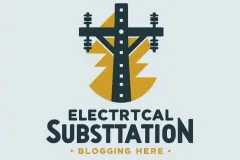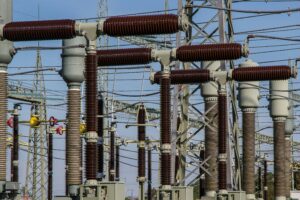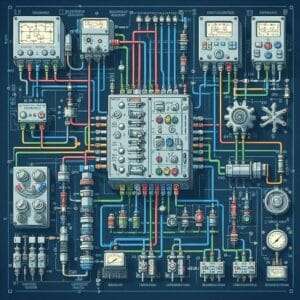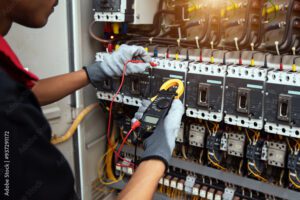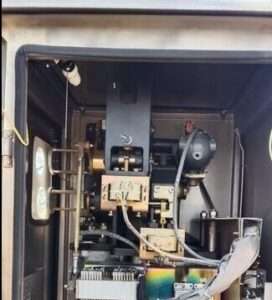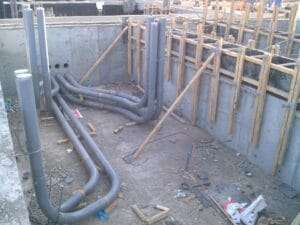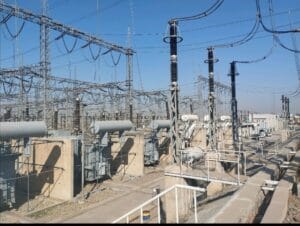Bus Bar Differential Relay in Substation
Bus bar differential relay represent one of the most critical components in modern substation protection systems. As electrical power grids become increasingly complex and demand for reliable electricity grows, understanding these protective devices becomes essential for power system engineers and technicians. This comprehensive guide explores everything you need to know about busbar protection relays, their applications in substations, and how they maintain electrical system stability. What is a Bus Bar Differential Relay? A Bus bar differential relay is a sophisticated protective device that continuously monitors electrical current flow within substation. These relays serve as the primary defence mechanism against internal bus bar faults, ensuring rapid fault detection and isolation to prevent widespread power outages and equipment damage. The fundamental operating principle involves comparing the algebraic sum of currents entering and leaving the busbar. Under normal operating conditions, the current flowing into the busbar equals the current flowing out (Kirchhoff’s current law). When an internal fault occurs within the protected zone, this balance is disrupted, triggering the relay to initiate protective action. Functions of Substation Bus Differential Protection Primary Protection Functions Fault Detection and Isolation: The relay’s primary function involves detecting internal bus bar faults through precise current imbalance monitoring. When fault currents exceed predetermined thresholds, the system immediately isolates the affected section. Selective Protection: Unlike traditional overcurrent protection, Bus bar differential relay provide selective tripping, isolating only the faulty bus section while maintaining power supply to healthy circuits. This selectivity minimizes system disruption and improves overall reliability. High-Speed Operation: Modern digital differential relays operate within milliseconds, providing ultra-fast fault clearance essential for maintaining system stability and preventing cascading failures. Secondary Protection Benefits Equipment Protection: By rapidly clearing internal faults, these relays prevent extensive damage to expensive substation equipment including transformers, switchgear, and measurement devices. Arc Flash Mitigation: Fast fault clearance significantly reduces arc flash energy, improving personnel safety during maintenance operations. System Stability: Quick fault isolation helps maintain voltage stability and prevents widespread blackouts in interconnected power systems. Bus bar Fault Clearing Process The fault clearing mechanism involves several coordinated steps utilizing current transformers (CTs) and intelligent relay algorithms: Step-by-Step Fault Clearing Process This coordinated response typically occurs within 1-2 cycles (16-33 milliseconds at 60 Hz), minimizing equipment damage and system disruption. Types of Bus bar Differential Relay Schemes Low-Impedance Bus Differential Relays Low-impedance differential protection represents the modern standard for substation busbar protection, utilizing advanced digital signal processing and microprocessor-based algorithms. Key Characteristics: Advantages: Applications: High-Impedance Bus bar Differential Relay High-impedance differential protection utilizes a voltage-operated principle, connecting all CT secondaries in parallel through a high-impedance stabilizing resistor. Key Characteristics: Advantages: Limitations: Substation Applications and Considerations Transmission Substations In high-voltage transmission substations, bus differential relays protect critical busbar sections that connect multiple transmission lines, transformers, and generation sources. The reliability of these protection systems directly impacts grid stability and power quality. Critical Considerations: Distribution Substations Distribution substations utilize bus differential protection to safeguard medium-voltage busbars serving residential and commercial loads. These applications often emphasize cost-effectiveness while maintaining adequate protection performance. Key Requirements: Industrial Substations Industrial facilities require robust busbar protection to maintain continuous production processes and prevent costly downtime. These applications often involve complex load patterns and specialized protection requirements. Specialized Needs: Modern Advancements in Bus Differential Technology Digital Protection Features Contemporary bus differential relays incorporate advanced digital technologies that enhance protection performance and system integration capabilities. Advanced Features: Communication and Integration Modern relays support various communication protocols enabling seamless integration with substation control systems and wide-area monitoring networks. Communication Capabilities: Installation and Maintenance Considerations Proper Installation Practices Successful bus differential relay implementation requires careful attention to CT installation, wiring practices, and system commissioning. Installation Requirements: Maintenance and Testing Regular maintenance ensures reliable operation throughout the relay’s service life, typically spanning 15-20 years in substation environments. Maintenance Activities: Future Trends in Bus Bar Protection Artificial Intelligence Integration Emerging technologies incorporate artificial intelligence and machine learning algorithms to enhance protection performance and reduce false operations. AI Applications: Cyber security Enhancements As substations become increasingly digitized, cyber security becomes paramount for protecting critical infrastructure. Security Measures: Conclusion Bus bar Differential Relay serve as indispensable guardians of electrical power system stability, providing rapid and selective protection for critical substation infrastructure. Understanding the differences between low-impedance and high-impedance protection schemes enables engineers to select the most appropriate solution for specific applications. As power systems continue evolving toward greater complexity and digitization, bus differential protection technology advances to meet emerging challenges. Modern digital relays offer enhanced performance, improved integration capabilities, and advanced diagnostic features that support reliable power system operation. Whether protecting transmission substations, distribution facilities, or industrial installations, bus bar differential relays remain essential components for maintaining electrical system reliability and preventing widespread outages. Proper selection, installation, and maintenance of these protective devices ensure continued protection performance and contribute to overall power system resilience. The future of bus bar protection lies in intelligent, connected systems that leverage advanced algorithms and communication technologies to provide superior protection performance while supporting the evolving needs of modern electrical power grids.Complete Guide to Bus Bar Differential Relays in Substations: Protection, Types, and Applications Bus bar differential relays represent one of the most critical components in modern substation protection systems. As electrical power grids become increasingly complex and demand for reliable electricity grows, understanding these protective devices becomes essential for power system engineers and technicians. This comprehensive guide explores everything you need to know about bus bar protection relays, their applications in substations, and how they maintain electrical system stability. This coordinated response typically occurs within 1-2 cycles (16-33 milliseconds at 50 Hz), minimizing equipment damage and system disruption.
Bus Bar Differential Relay in Substation Read More »
